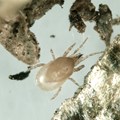Enhanced plant health with biological controls in peat-free growing media
In the innovative world of horticulture, the marriage of two environmentally conscious practices—peat-free growing media and biological controls—is revolutionising the way we grow our plants. The adoption of peat-free growing media signifies a significant step towards more sustainable horticulture. However, growing in peat-free media presents its own set of challenges, including nutrient imbalances and susceptibility to pests. This is where the utilisation of biological controls comes into play. These beneficial organisms not only help overcome the challenges posed by peat-free media but also enhance the vitality and resilience of the plants, offering a symbiotic solution that marries environmental sustainability with robust plant growth.
The Role of Biological Controls
Biological controls are natural methods used in horticulture to control pests and diseases, typically involving the use of other living organisms. These can include beneficial insects, bacteria, fungi, or other microorganisms that are either predators or parasites to plant pests, or that can outcompete harmful pathogens. The introduction of these biological controls creates a natural balance in the growing environment and reduces the need for chemical pesticides, further enhancing the sustainability of the operation.
Better Response with Biological Controls
When it comes to peat-free growing media, biological controls are not just an add-on but a crucial component for a successful growing cycle. Peat-free media can often present a more challenging environment for plants due to factors like pH variability, nutritional imbalances, or reduced water-holding capacity.
However, biological controls can enhance the resilience of plants growing in these media. Beneficial microorganisms, for example, can help to improve the structure of the growing media, increase nutrient availability, and protect the plants from pathogenic organisms. Insect predators and parasites can also keep pest populations in check. This biodiversity allows for a robust and adaptable plant immune response, leading to healthier, more vigorous growth in peat-free media.
As the shift towards sustainable horticulture practices continues to gain momentum, the use of peat-free growing media coupled with biological controls offers a viable and eco-friendly solution. The symbiotic relationship between these biological controls and plants results in resilient, healthy plants that are less reliant on chemical inputs. This not only reduces environmental impact but also enhances crop quality and yield, making it a win-win for growers, consumers, and the environment alike.

